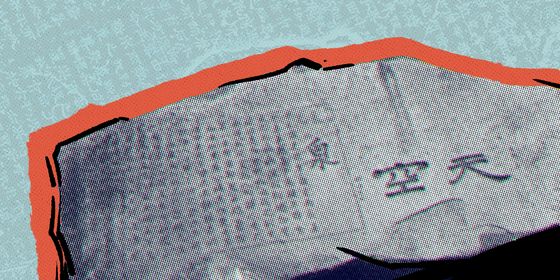With no washing machines or chemical detergents available, ancient Chinese had to get innovative to keep their clothes clean
Over 2,000 years ago, Confucius put forth a requirement for people’s clothing: “A gentleman should dress properly, and behave well.” Wearing clean and tidy clothes was an important part of social etiquette, yet in the days before washing machines and modern detergent, ancient Chinese thought of many creative methods to do their laundry and keep up appearances.
As early as in the Zhou dynasty (1046 – 256 BCE), people discovered a kind of natural detergent—plant ash. The Book of Rites (《礼记》), a collection of texts mainly published in the Han dynasty (206 – 220 CE) on the society and politics of the Zhou era, recorded that “when your hat belt and clothes get dirty, wash them with plant ash.” That’s because plant ash contains potassium carbonate, which has cleansing properties. Later, this detergent was improved. According to The Rites of Zhou (《周礼》), a work on Zhou dynasty politics and culture mainly compiled during the Spring and Autumn Period (770 – 476 BCE), ashes of burnt shells were added to plant ash for washing cloth. The principle was that when the plant ash meets the burnt shells in water, calcium hydroxide is produced, which can clean away grease and dirt.
In the Jin dynasty (265 – 420), a more luxurious version of washing powder emerged. Known as bath beans (澡豆), it was a powdery soap made from ground beans or peas mixed with spices such as cloves, eaglewood, and various flowers, which could be used as both shower gel and laundry detergent. Bath beans were prized because they gave clothes a pleasant fragrance, though the high price of the spices within meant only wealthy nobles could afford it. In A New Account of the Tales of the World (《世说新语》), a compilation of character sketches and anecdotes from the first to the sixth century, Wang Dun (王敦), son-in-law to Emperor Wu of the Jin dynasty, even mistook bath beans for food when he was invited to the palace. If a relative of the emperor could mistake this detergent for food, ordinary folk were probably even less familiar with this innovative laundry soap.
In the Tang dynasty (618 – 907), bath beans became more popular among ordinary people, and the formula was improved. Famous Tang-dynasty physician Sun Simiao (孙思邈), who was known as the “King of Medicine,” recorded a new recipe for making bath beans in his Essential Formulas for Emergencies Worth a Thousand Pieces of Gold (《千金要方》): Clean a pig’s pancreas, dry it and grind it into powder. Then, add bean powder and spice. This formula had a lasting influence. Even today, handmade porcine pancreas soap is still beloved by many people, and in some dialects, soap is also called 胰子 (yízi), with 胰 meaning pancreas.













